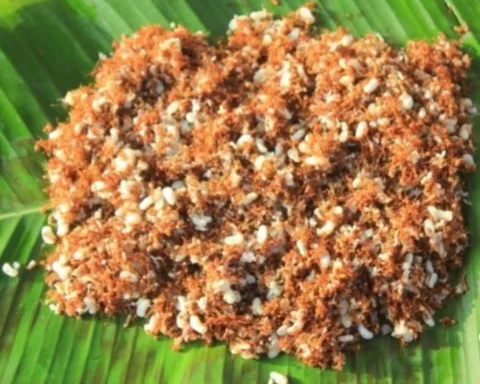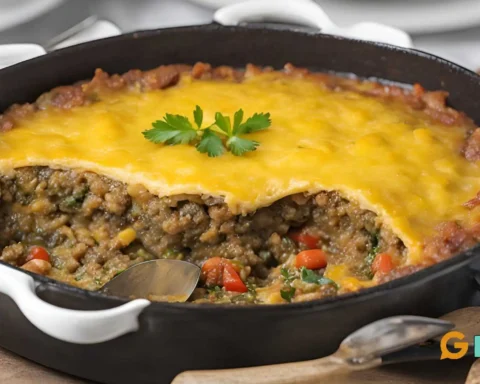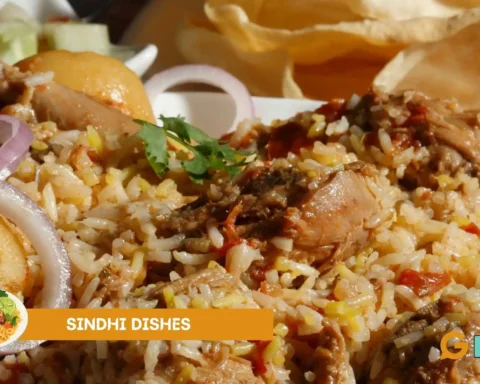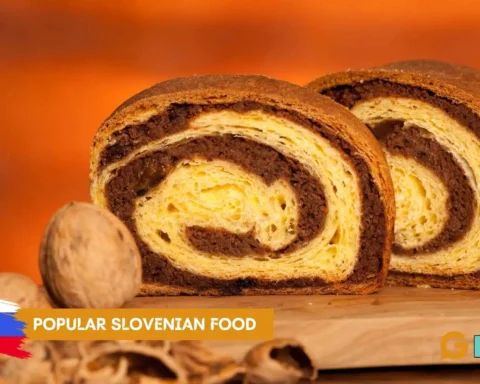Have you ever wondered How to Make dumplings? Dumplings worldwide are eaten in different forms. Like from steamed to fried ones. But how to make dumplings at home few people know. Homemade dumplings add a personal touch. Dumplings are traditional British and Irish Dish. It is a versatile creation that combines ingredients with creative techniques. So, in this guide, we will learn about the craft of making dumplings and how to master them.
Table of Contents
Cooking Techniques: How to Make Dumplings
Mastering the art of making dumplings is not complete without improving the skills, as it involves various cooking methods that bring the creation to life. Each technique provides a unique texture and flavour profile that allows you to tailor the dumplings according to your preferences and showcase your culinary prowess. So, there are three cooking techniques for dumplings—boiling, steaming, and pan-frying. The homemade dumpling recipe is an easy one.
To boil dumplings, follow the steps below-
- Bring a pot of cold water to a rolling boil.
- Gently add dumplings to the boiling water, ensuring they have enough space to move around.
- Stir gently to prevent sticking, and lower the heat to a simmer.
- Once the dumplings float to the surface, continue cooking for an additional 2-3 minutes to ensure the filling is fully cooked.
- Carefully scoop out the dumplings and transfer them to a plate using a slotted spoon.
Below are the steaming process steps provided-
- Line a steamer basket with parchment paper to prevent sticking, as steamer baskets help to steam dumplings properly.
- Arrange the dumplings in a single layer in the steamer basket, leaving some space between each dumpling.
- You can use the slotted spoon to stir the dumplings.
- Place the steamer over a pot of simmering water, ensuring the water doesn't touch the dumplings.
- Cover the steamer with a lid and steam for the recommended 10-15 minutes cooking time or until the parchment paper becomes slightly translucent and the filling is cooked.
You can also make soup dumplings through steamed dumplings by covering them for 8 minutes until the filling is cooked properly. A simple recipe is there to make soup dumplings. They are healthy also. Soup dumplings can also be arranged on parchment baking paper.
You can use the chicken potsticker for pan-fried dumplings. Below are the steps to make perfect crispy, brown-coloured pan-fried dumplings.
- Heat a non-stick pan over medium-high heat and add a small amount of vegetable oil.
- Put a single layer of dumplings on the pan.
- Allow the dumplings to cook undisturbed until the bottoms become golden and crispy, usually 2-3 minutes.
- Once the bottoms are nicely browned, carefully add water to the skillet to cover the bottom by about half an inch.
- Quickly cover the skillet with a lid to trap the steam and finish cooking the pan-fried dumplings. This steaming process helps cook the filling thoroughly.
- Cook for 3-5 minutes or until the wrappers are translucent and the water has evaporated.
- Remove the lid and let the dumplings continue cooking for a minute or two to regain their crispiness.
Experiment with these cooking techniques to create dumplings that suit your taste and style. Every method provides a distinct culinary experience, ensuring your dumplings are a harmonious fusion of taste, texture, and visual appeal. It can be made healthier through air fryer dumplings. You can also store the dumpling soup for 2 days.
How to Create Perfect Dumpling Fillings?
Creating perfect dumpling fillings combines flavours, textures, and techniques. So, here is the dumpling filling recipe provided to make a perfect dumpling filling-
1. Choose Your Protein: Select a protein base, such as ground pork, chicken, beef, shrimp, or tofu. You can also mix different proteins for added flavour.
2. Add Vegetables: Incorporate finely chopped or shredded vegetables for texture and flavour. Common options include cabbage, carrots, mushrooms, scallions, water chestnuts, and bell peppers. Ensure the vegetables are well-drained to avoid a soggy filling.
3. Add Aromatics: Aromatics like garlic, ginger, and shallots enhance the flavour profile of the filling. Finely mince or grate these ingredients for even distribution.
4. Seasoning: Balance flavours with a combination of seasonings. Common options include soy sauce, oyster sauce, sesame oil, salt, pepper, and sugar. Taste as you go to ensure a balanced and well-seasoned filling.
5. Binder: To help bind the filling and keep it moist, add an appropriate binder, such as beaten egg or cornstarch slurry (cornstarch mixed with water). These ingredients also contribute to the texture of the filling.
6. Umami Boosters: Add umami-rich ingredients like finely chopped shrimp, dried shiitake mushrooms (rehydrated and minced), or a small fish sauce.
7. Customization: Get creative with your filling by incorporating ingredients like chopped water chestnuts for crunch, chopped nuts for texture, or even a chilli paste for heat.
8. Mixing: Thoroughly mix the ingredients. Mixing the filling in one direction is an excellent technique to help develop a uniform texture.
9. Test Cook: Take a small amount of the filling and cook it in a pan to taste-test for seasoning. Adjust as needed before proceeding to fill the dumplings.
10. Wrapping: Use your chosen dumpling wrapper to encase the filling. You can fold them into shapes such as crescent, pleated, or sealed half-moons.
11. Cooking: Steam, boil, pan-fry, or deep-fry the dumplings according to your preference. Each cooking method imparts a different texture and flavour to the dumplings.
12. Dipping Sauce: Pair your dumplings with a complementary dipping sauce, such as soy sauce, vinegar, sesame oil, minced garlic, and minced ginger.
13. Experiment and Refine: Don't be afraid to experiment with different ingredient combinations and ratios to create your perfect dumpling filling. Keep refining your recipe based on feedback and personal taste.
So, to keep practising is important. As you gain experience, you will develop a sense of flavours and textures and enjoy your dumpling fillings.
How to Prepare the Dumpling Dough?
Preparing the dough is a simple task. It requires some basic ingredients that are-
- 2 cups all-purpose flour
- Add 1 cup of water as required
- A pinch of salt (optional)
Instructions:
- Measure the Flour: Place the all-purpose flour in a large mixing bowl. You can add a pinch at this stage if you're using salt.
- Add Water: Add warm water to the flour while stirring with a fork or chopsticks. Start with 3/4 cup of water and add more as needed. The goal is to form a soft dough that is not too sticky. The amount of water required can vary based on humidity and the flour you use.
- Mix and Knead: Use your hands to make the dough ball forms. Once most of the flour is incorporated, transfer the dough onto a clean and floured surface. Knead the dough for about 5-10 minutes until it becomes smooth and elastic. You can use the heel of your palm to push the dough away from you and then fold it back over itself.
- Rest the Dough: Take the piece of dough and shape it into a ball. Place it back in the mixing bowl. Cover the bowl with a damp cloth or plastic wrap and let the dough rest for 15-30 minutes. This resting period allows the gluten to relax, making the dough easier to roll out.
- Roll Out the Dough: After resting, the dough is ready to be rolled out. You can either roll out the entire dough at once or divide it into smaller portions. Roll the dough into a thin sheet, about 1/8 to 1/16 inch thick, depending on your preference.
- Cut: Use a round cookie cutter or a glass to cut out circles from the rolled dough. The size of the circles will depend on the size of the dumplings you want to make.
- Fill and Seal: Place a small amount of your desired filling in the centre of each dough circle. Fold the circle in half to create a half-moon shape and press the edges together to seal. You can use your fingers to crimp or pleat the edges for a decorative look.
Your dumpling dough is ready to be cooked or frozen for later use. You can use this basic dough recipe for various types of dumplings. The dumpling soup can also be made. It can be served fresh once the dumplings absorb the extra liquid to provide the flavour.
Exploring Dumpling Cultures
Exploring the dumpling culture is a fascinating culinary journey. As there are a variety of flavours, textures, and cooking methods. Below are a few prominent cultures listed from diverse regions-
- Chinese dumplings: Chinese dumplings are an incredible variety of dumplings. Jiaozi are crescent-shaped dumplings typically filled with minced meat (pork, beef, chicken) and vegetables. The dim sum includes a range of small, bite-sized dumplings like Har Gow (shrimp dumplings) and Siu Mai (open-topped dumplings). In a pot is a famous way of cooking dumplings in regions like North America. In Chinese dumplings, black rice vinegar is also used with homemade chilli oil.
- Korean dumplings: They can be steamed, boiled, or pan-fried and are often filled with a mixture of minced meat (pork, beef) and vegetables. Kimchi dumplings are a popular variation, incorporating the distinctive flavours of kimchi.
- Indian dumplings: In India, you'll find various types of dumplings. Indian dumplings are also known as Asian dumplings. Momos are a Nepali and Tibetan speciality, made with thin dough and filled with meat or vegetables. These Asian dumplings are deep-fried. In-ground chicken dumplings, there is one popular dumpling called drop dumplings. Seasonings are also done that include white pepper, salt, sugar, etc.
- Russian dumplings: They are small dumplings filled with a mixture of minced meat and spices. Vareniki are similar but can have a wide range of sweet or savoury fillings, including cottage cheese, berries, potatoes, and more.
- Ukrainian dumplings: These are semicircular dumplings made from unleavened dough and filled with various ingredients like potatoes, cheese, mushrooms, and meat. They can be boiled, fried, or baked.
- Italian dumplings: Italian dumplings are also known as Gnocchi. Soft dumplings made from potatoes or flour are often served with various sauces. Ravioli are pasta dumplings filled with cheese, meat, or vegetables and are typically served with a sauce.
Conclusion
Mastering the art of making dumplings is a rewarding culinary endeavour that spans cultures and continents. Whether you're making Chinese, Japanese, or Indian dumplings, the process of preparing dumplings connects us to the rich tapestry of global cuisine. From kneading the dough to filling it with a tantalizing blend of ingredients, creating these delectable parcels celebrates tradition, creativity, and the joy of sharing flavorful experiences with loved ones. So, embark on this flavourful journey, experiment with fillings and shapes, and savour the satisfaction of bringing a world of dumpling delights to your table.
FAQs
What are the materials for dumplings?
The dumplings are made of flour, baking powder, white sugar, salt, and dry ingredients.
What are the methods of preparing dumplings?
There are three basic methods to prepare dumplings: steaming, boiling, and frying. It can be pan-fried or deep-fried.
What are dumplings also called?
Dumplings are also called Dimsum.
How many types of dumplings are there?
There are various types of dumplings, like Chinese, Indian, Japanese, etc.










